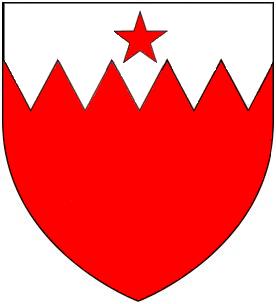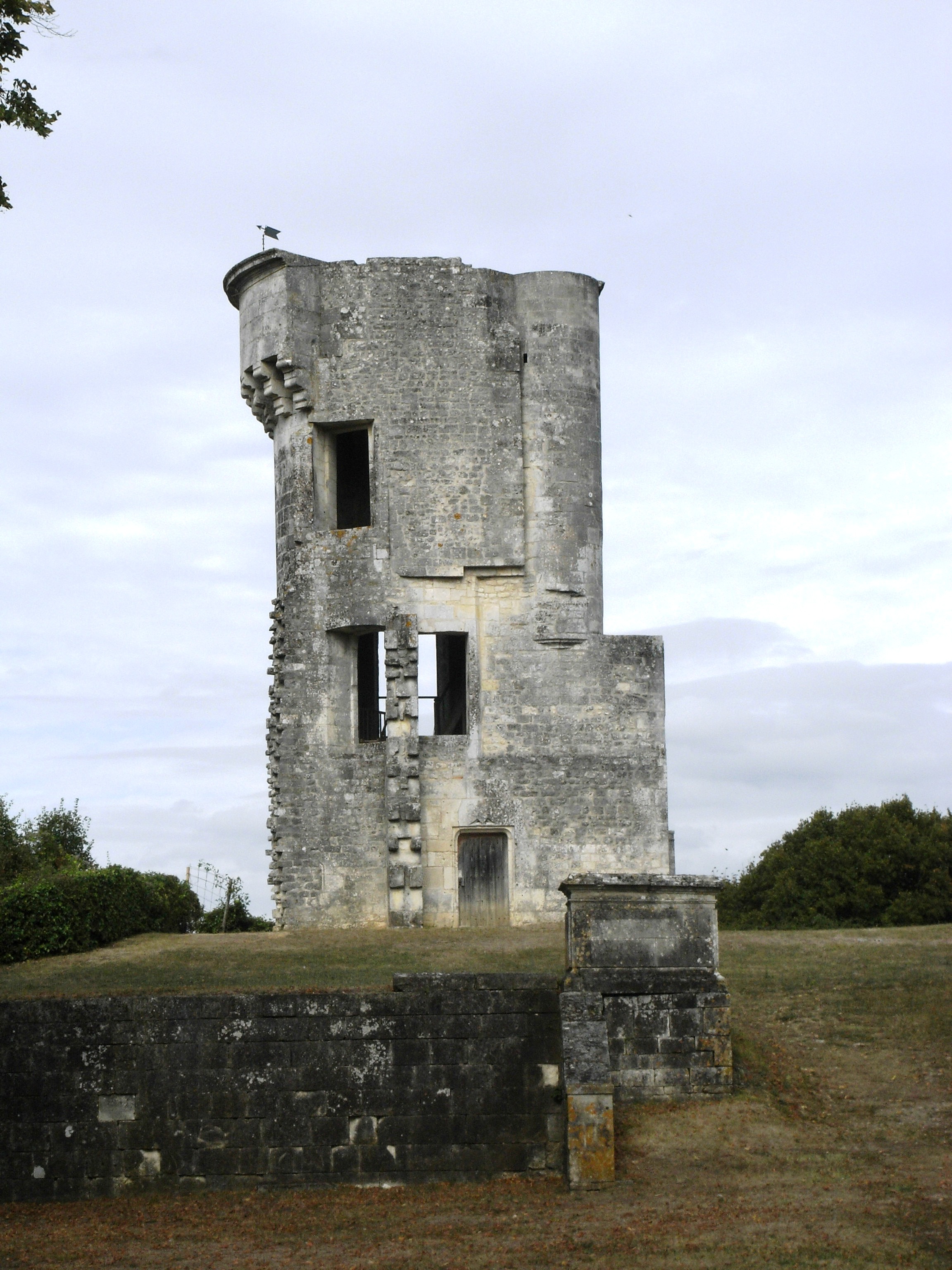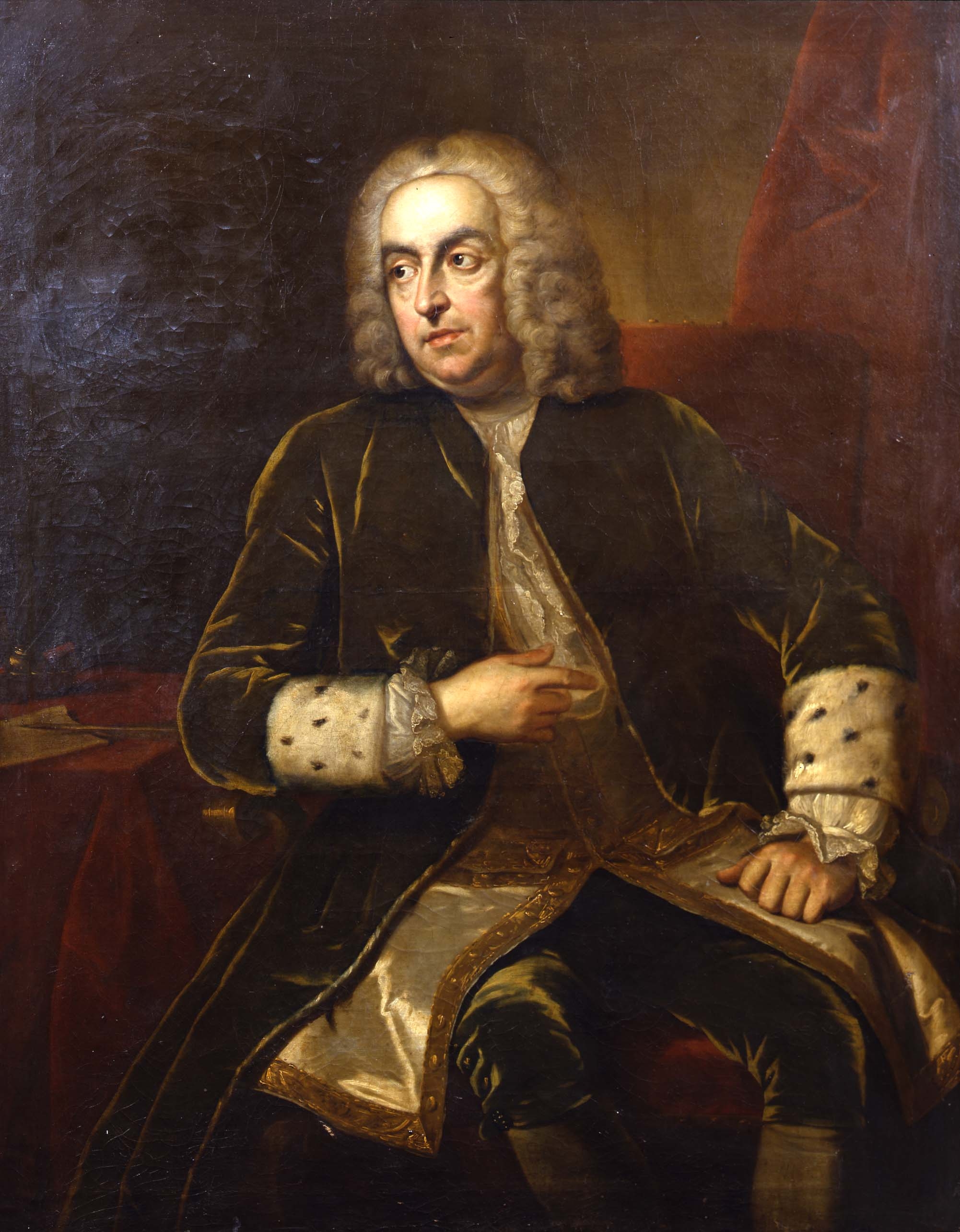|
Brightley, Chittlehampton
Brightley was historically the principal secondary estate within the parish and former manor of Chittlehampton in the county of Devon, England, situated about 2 1/4 miles south-west of the church and on a hillside above the River Taw. From the early 16th century to 1715 it was the seat of the Giffard family, whose mansion house occupied the moated site immediately to the west of the present large farmhouse known as Brightley Barton, a Grade II listed building which incorporates some elements of the earlier house. It is not to be confused with the 12th-century Brightley Priory near Okehampton. History Brightley was the seat of a junior line of the prominent gentry family of Giffard of Halsbury in the parish of Parkham. The present house, named Brightley Barton which has long served as a large farmhouse, retains only one room of the former much larger mansion of the Giffards, but the mediaeval retaining walls of the former moat survive, which is a great rarity in North Devon.Cherry ... [...More Info...] [...Related Items...] OR: [Wikipedia] [Google] [Baidu] |
Chittlehampton
Chittlehampton is a village and civil parish in the North Devon district of Devon, England, about south-west of Barnstaple. At the 2001 census, the parish had a population of 820. The parish originally had two exclaves; Chittlehamholt to the south (now a parish in itself), and part of the modern parish of East and West Buckland. It now includes Chittlehampton, Umberleigh, Furze, Stowford and some other outlying hamlets. The parish is surrounded clockwise from the north by the parishes of Swimbridge, Filleigh, South Molton, Satterleigh and Warkleigh, High Bickington, Atherington, and Bishop's Tawton. The village was the site of limestone quarries which supplied many of the county's lime kilns. Parish church Chittlehampton is the home of St. Hieritha's church and holy well. Until the 16th century many people made pilgrimages to Chittlehampton to visit the well. Today, campanologists travel from far and wide to ring the church's bells. The church is large and of th ... [...More Info...] [...Related Items...] OR: [Wikipedia] [Google] [Baidu] |
Richard I Of England
Richard I (8 September 1157 – 6 April 1199), known as Richard the Lionheart or Richard Cœur de Lion () because of his reputation as a great military leader and warrior, was King of England from 1189 until his death in 1199. He also ruled as Duke of Normandy, Duke of Aquitaine, Aquitaine, and Duchy of Gascony, Gascony; Lord of Cyprus in the Middle Ages, Cyprus; Count of Poitiers, Counts and dukes of Anjou, Anjou, Count of Maine, Maine, and Count of Nantes, Nantes; and was overlord of Brittany at various times during the same period. He was the third of five sons of Henry II of England and Eleanor of Aquitaine and was therefore not expected to become king, but his two elder brothers predeceased their father. By the age of 16, Richard had taken command of his own army, putting down rebellions in Poitou against his father. Richard was an important Christian commander during the Third Crusade, leading the campaign after the departure of Philip II of France and achieving sev ... [...More Info...] [...Related Items...] OR: [Wikipedia] [Google] [Baidu] |
Monumental Brass
A monumental brass is a type of engraved church monument, sepulchral memorial once found through Western Europe, which in the 13th century began to partially take the place of three-dimensional church monument, monuments and effigy, effigies carved in stone or wood. Made of hard latten or sheet brass, let into the pavement, and thus forming no obstruction in the space required for the services of the church, they speedily came into general use, and continued to be a favourite style of sepulchral memorial for three centuries. In Europe Besides their great value as historical monuments, monumental brasses are interesting as authentic contemporary evidence of the varieties of armour and costume, or the peculiarities of palaeography and heraldic designs, and they are often the only authoritative records of the intricate details of family history. Although the intrinsic value of the metal has unfortunately contributed to the wholesale spoliation of these interesting monuments, they are ... [...More Info...] [...Related Items...] OR: [Wikipedia] [Google] [Baidu] |
Lord Of The Manor
Lord of the manor is a title that, in Anglo-Saxon England and Norman England, referred to the landholder of a historical rural estate. The titles date to the English Feudalism, feudal (specifically English feudal barony, baronial) system. The lord enjoyed Manorialism, manorial rights (the rights to establish and occupy a residence, known as the manor house and demesne) as well as seignory, the right to grant or draw benefit from the estate (for example, as a landlord). The title is not a peerage or title of upper nobility (although the holder could also be a peer) but was a relationship to land and how it could be used and those living on the land (tenants) may be deployed, and the broad estate and its inhabitants administered. The title continues in modern England and Wales as a legally recognised form of property that can be held independently of its historical rights. It may belong entirely to one person or be a moiety title, moiety shared with other people. The title is know ... [...More Info...] [...Related Items...] OR: [Wikipedia] [Google] [Baidu] |
Earl Of Bath
Earl of Bath was a title that was created five times in British history, three times in the Peerage of England, once in the Peerage of Great Britain and once in the Peerage of the United Kingdom. It is now extinct. Earls of Bath; First creation (1486) *Philibert de Chandée, 1st Earl of Bath (d. aft. 1486) Earls of Bath; Second creation (1536) *John Bourchier, 1st Earl of Bath (1470–1539) * John Bourchier, 2nd Earl of Bath (1499–1561), son. * William Bourchier, 3rd Earl of Bath (bef. 1557–1623), grandson. *Edward Bourchier, 4th Earl of Bath (1590–1636), son. *Henry Bourchier, 5th Earl of Bath (1593–1654), first cousin once removed. Earls of Bath; Third creation (1661) * John Granville, 1st Earl of Bath (1628–1701) *Charles Granville, 2nd Earl of Bath (1661–1701), son. *William Granville, 3rd Earl of Bath (1692–1711), son. Jacobite creations George Granville, 1st Baron Lansdowne had been created a baron by Queen Anne on 1 January 1712. On 6 October 1721 the ... [...More Info...] [...Related Items...] OR: [Wikipedia] [Google] [Baidu] |
Tawstock
Tawstock is a village, civil parish and former Manorialism, manor in North Devon in the English county of Devon, England. The parish is surrounded clockwise from the north by the parishes of Barnstaple, Bishop's Tawton, Atherington, Devon, Atherington, Yarnscombe, Horwood, Lovacott and Newton Tracey and Fremington, Devon, Fremington. In 2001 it had a population of 2,093. The estimated population in June 2019 was 2,372. Parish Church A Grade I listed building, St Peter's church is, unusually for Devon, a church largely of the 14th century. A church existed on this location circa the 12th century, but was extensively modified and enlarged. According to the listing summary, "the crossing tower, north and south transepts and aisles were added" in the 14th century; additional modifications were made in the next two centuries before a restoration in 1867-1868. The plan is cruciform and the site is in the former park of the Earl of Bath, Earls of Bath. The collection of church monume ... [...More Info...] [...Related Items...] OR: [Wikipedia] [Google] [Baidu] |
Fulk FitzWarin, 4th Baron FitzWarin
Fulk is an old European personal name, probably deriving from the Germanic ''folk'' ("people" or "chieftain"). It is cognate with the French Foulques, the German Volk, the Italian Fulco and the Swedish Folke, along with other variants such as Fulke, Foulkes, Fulko, Folco, Folquet, and so on. However, the above variants are often confused with names derived from the Latin '' Falco'' ("falcon"), such as Fawkes, Falko, Falkes, and Faulques. Counts of Anjou *Fulk I, Count of Anjou (about 870–942), ''"the Red"'' *Fulk II, Count of Anjou (died 958), ''"the Good"'' *Fulk III, Count of Anjou (972–1040), ''"the Black"'' *Fulk IV, Count of Anjou (1043–1109), ''"le Réchin"'' *Fulk, King of Jerusalem (1089/1092–1143), ''"the Younger"'', also Count of Anjou Christian saints and clergymen * Saint Foulques de Fontenelle (died 845), French saint and 21st abbot of Fontenelle *Guy Foulques, later known as Clement IV, Pope 1265–1268 *Fulk (archbishop of Reims) (died 900), "the Ve ... [...More Info...] [...Related Items...] OR: [Wikipedia] [Google] [Baidu] |
Feudal Barony Of Barnstaple
From AD 1066, the feudal barony of Barnstaple was a large English feudal barony, feudal barony with its Caput baroniae, caput at the town of Barnstaple in north Devon, England. It was one of eight feudal baronies in Devonshire which existed in the Middle Ages. In 1236 it comprised 56 knight's fees or individual member Manorialism, manors. The Feudal land tenure, feudal service owed for half the barony in 1274 was the provision to the royal army of two knights or four sergeants for forty days per annum, later commuted to scutage. Descent de Mowbray The barony was first granted by William the Conqueror (1066–1087) to Geoffrey de Montbray, Geoffrey de Mowbray (died 1093), Bishop of Coutances, who is recorded as its holder in the ''Domesday Book'' (1086). His heir was his nephew Robert de Mowbray (died 1125), Earl of Northumbria, Earl of Northumberland, son of Geoffrey's brother Robert de Mowbray. In 1095 Robert II rebelled against King William II of England, William II (1087� ... [...More Info...] [...Related Items...] OR: [Wikipedia] [Google] [Baidu] |
Feudal Barony Of Bampton
The feudal barony of Bampton was one of eight feudal baronies in Devonshire which existed during the mediaeval era, and had its ''caput'' at Bampton Castle within the manor of Bampton. Descent Domesday Book The Domesday Book of 1086 lists ''Baentone'' as one of the 27 Devon holdings of Walter of Douai, also known therein as ''Walscin''. Walter was also feudal baron of Castle Cary in Somerset. At Bampton he established a castle,Risdon, p.64 the motte of which survives today. The manor was a very large holding of 76 households, and previously to the Norman Conquest of England of 1066 had been held in demesne by King Edward the Confessor. As a manor in the royal demesne it had paid no tax. Walter had obtained it from William the Conqueror in exchange for the manors previously granted to him of Ermington and Blackawton.Thorn, part 2, 23:5 According to the Book of Fees the member manors of the barony of Bampton included: Duvale, ''Hele'' (possibly Hele, Clayhanger), Doddis ... [...More Info...] [...Related Items...] OR: [Wikipedia] [Google] [Baidu] |
Fulk FitzWarin, 5th Baron FitzWarin
Fulk is an old European personal name, probably deriving from the Germanic ''folk'' ("people" or "chieftain"). It is cognate with the French Foulques, the German Volk, the Italian Fulco and the Swedish Folke, along with other variants such as Fulke, Foulkes, Fulko, Folco, Folquet, and so on. However, the above variants are often confused with names derived from the Latin '' Falco'' ("falcon"), such as Fawkes, Falko, Falkes, and Faulques. Counts of Anjou *Fulk I, Count of Anjou (about 870–942), ''"the Red"'' *Fulk II, Count of Anjou (died 958), ''"the Good"'' *Fulk III, Count of Anjou (972–1040), ''"the Black"'' *Fulk IV, Count of Anjou (1043–1109), ''"le Réchin"'' *Fulk, King of Jerusalem (1089/1092–1143), ''"the Younger"'', also Count of Anjou Christian saints and clergymen * Saint Foulques de Fontenelle (died 845), French saint and 21st abbot of Fontenelle *Guy Foulques, later known as Clement IV, Pope 1265–1268 *Fulk (archbishop of Reims) (died 900), "the Ve ... [...More Info...] [...Related Items...] OR: [Wikipedia] [Google] [Baidu] |




